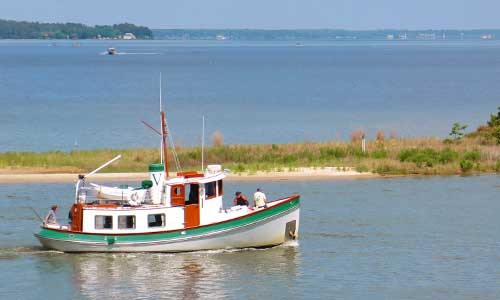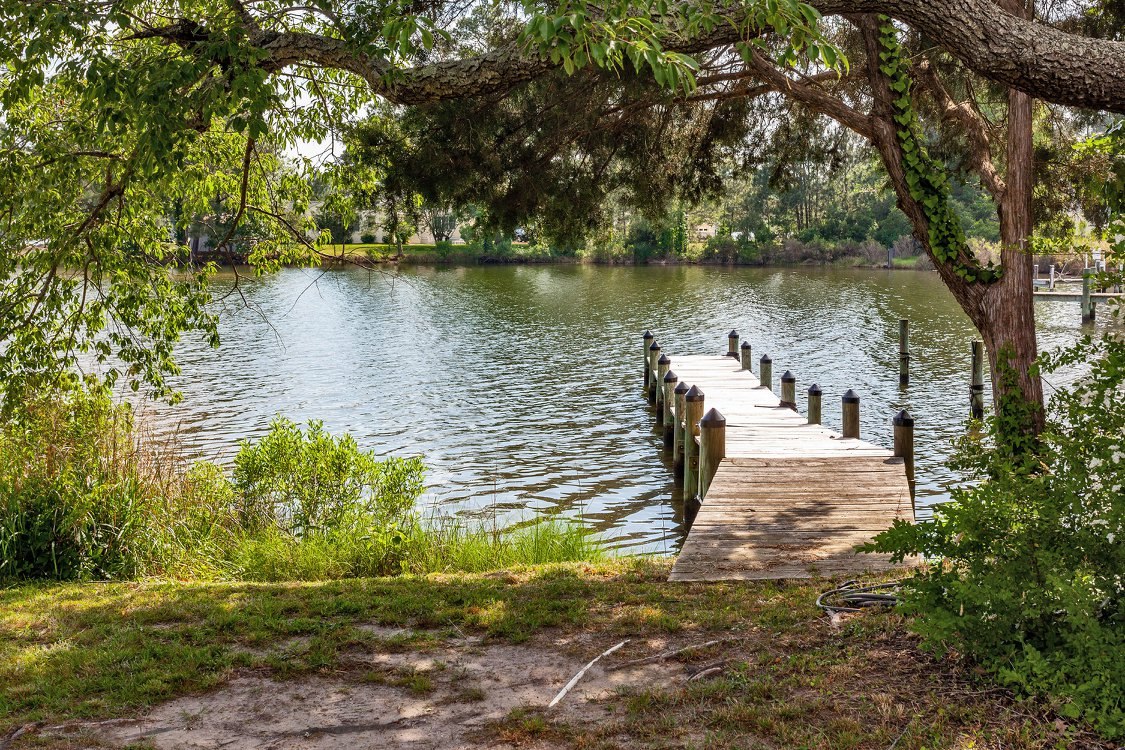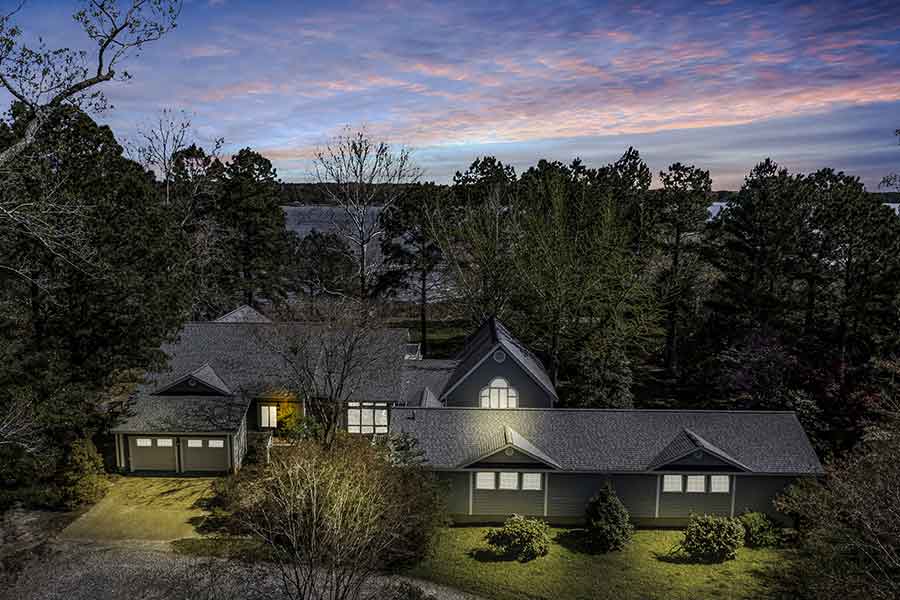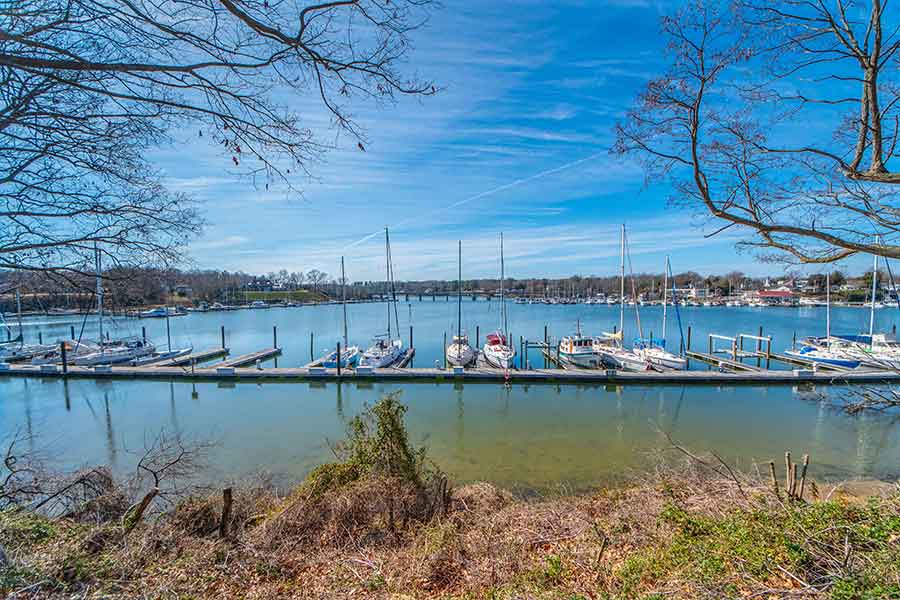There is so much to love about living on the water. The serenity, myriad recreational opportunities and the ever-changing flow of nature’s bounty are at your fingertips, right in your own back yard. A pier is your gateway to all the water has to offer, both at the shoreline and the waterways beyond. And when you are evaluating properties to purchase, the existing pier or the potential for constructing a pier is paramount to your decision.
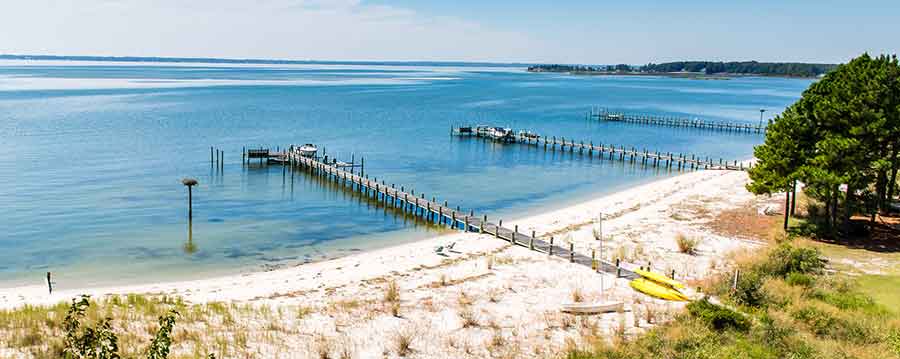
I consulted with some experts on the subject of pier construction, Michelle and Jimmy Meredith of Hammer Time Marine, Inc., located in Deltaville, Virginia. With almost 30 years of experience in shoreline construction along the waterways of the Chesapeake Bay, they have a wealth of knowledge to share and kindly did so.
Types and Styles of Piers
For residential purposes there are basically two types of piers. A permanent pier is one that is permanently attached to pilings and stays at the same level, whereas a floating pier or dock rises and falls with the tide along with the boats tied to them. A floating pier is typically built on shorelines where the distance between high and low tide is extreme. This prevents boat lines from becoming overly taut or loose, which can damage boats by pulling them out of the water or allowing them so much leeway they bang against the pier.
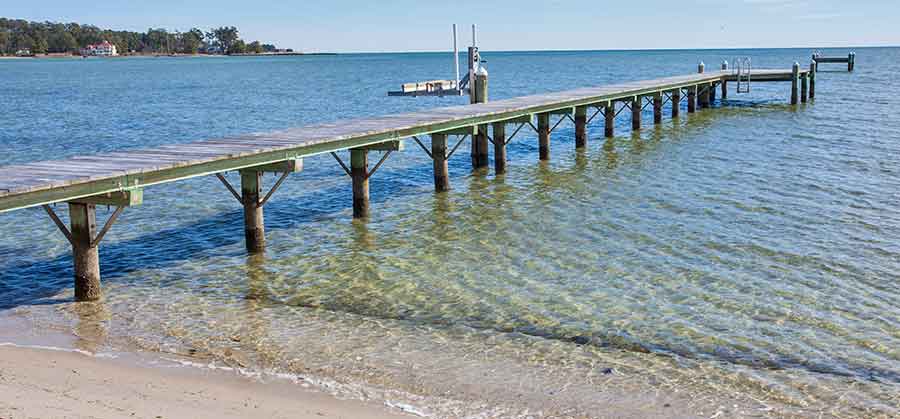
A permanent pier can be built with an additional floating dock attached alongside it, allowing easier boat boarding, launching of small watercraft and swimming. A ladder, ramp or stairs can be used to access the floating section. A common feature of any pier is an L-head or a T-head deck extension at the water end. Additional add-ons might include bench seating, handrails, multiple levels including stairs, mooring poles for docking a boat, a boatlift or cover, a fish-cleaning station, a gazebo. A pier can be as simple or as elaborate as your needs, your budget and building and zoning regulations will allow.
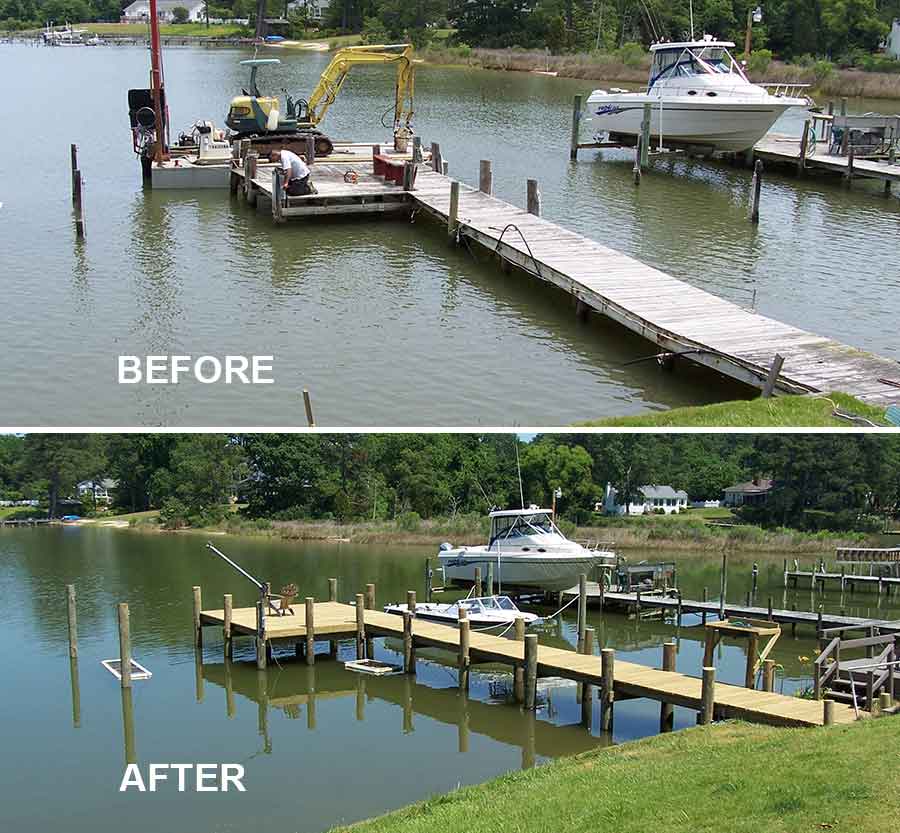
Can an Existing Pier be Renovated?
Maybe. It all depends on the condition of the pilings. And that depends on whether worms have invaded the wood and caused damage beyond their useful lifetime. A visual inspection is all that is needed to see worm damage on the top of the piling. The presence of even small pinholes on the outside indicate much broader damage on the inside. The condition of the piling under the water is impossible to evaluate. Therefore, adding onto an older pier is risky and something Hammer Time Marine does not recommend. Doesn’t make sense to add a brand new boatlift to old, weakened pilings. However, a storm-damaged pier that is fairly new can be salvaged and its parts used for rebuilding. Piling lifespan fluctuates widely from one location to another and the presence or absence of invading worms.
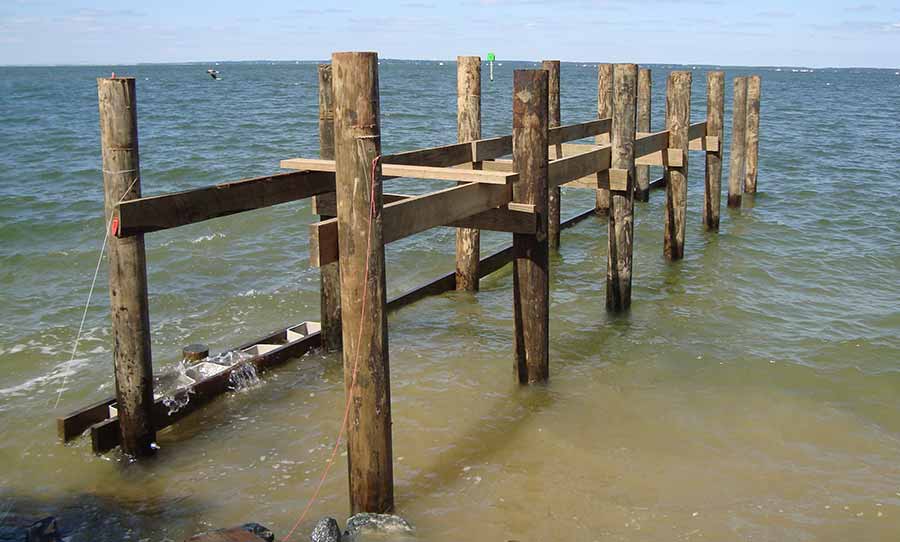
How is a Pier Constructed?
Each and every construction project is unique in size, location, and overall lay of the land. Pile driving is achieved using a long-reach excavator and vibratory hammer. Hammer Time Marine uses butt pilings, which are bigger at the bottom and smaller at the top, and work like a plunger. Once installed, you can’t pull it up. How does the construction crew know how long the pilings need to be? They start with one length and go up or down depending on when they reach a solid placement. The condition of the bottom can differ from sandy to muddy within a few feet, and sometimes they hit a thick layer of iron ore, a remnant of the meteor impact that formed the Chesapeake Bay millions of years ago. The pier deck is secured using screws instead of nails and deck boards are installed with space between each board allowing water to flow through, lessoning the impact of turbulent water during storms. Stringers and girders are bolted with 5/8″ timber bolts.
Pier Regulations and Permitting
There are many laws in place for ensuring the pier you build will comply with environmental, safety and zoning codes. Each county has its own regulations. Virtually all pier construction projects on the waterways of the Chesapeake Bay require the filing of regulatory permits from local, state and/or federal agencies. Many pier construction companies will handle the permitting paperwork for you, which is a huge help given the complexity of the regulations required oftentimes by multiple jurisdictions. For example, in Lancaster County, Virginia, construction landward of Mean High Water (MHW) is in the jurisdiction of the Lancaster County Land Use Office; construction between MHW and Mean Low Water (MLW) is in the jurisdiction of the Lancaster County Wetlands Board; and, construction in the water, or beyond MLW is in the jurisdiction of the Virginia Marine Resources Commission (VMRC) or, possibly, the Army Corps of Engineers.
Most applications take 30-60 days to be reviewed and processed. Keep in mind, if your project does not pass approval, modifications will need to be made and another application submitted to receive construction authorization. There are fees associated with the application process, including building or zoning fees, newspaper notices, survey fees, and possibly wetland fees, all paid by the property owner. These fees vary per county, and typically range from $50 to $200.
Don’t assume that you have water rights directly extending from your property line out into the water. Depending on the shared waterway, those lines might be narrower than you think.
Other restrictions for pier building include distance your pier will extend into the waterway on which it’s located and the distance from neighboring property. Adjoining property owners and those across from you will be given an opportunity to provide comments on your design to the Virginia Marine Resources Commission. Your riparian rights are assured provided that they do not interfere with the rights of your neighbors. Coordinating your plans with them is a good idea, as it will save time in the long run. Don’t assume that you have water rights directly extending from your property line out into the water. Depending on the shared waterway, those lines might be narrower than you think, such as at the head of a creek where it’s like a water cul-de-sac and each property owner’s water rights resemble a slice of the “pie.”
How Much Does it Cost to Build a Pier?
The main cost of the pier is the pilings. So when comparing prices make sure you are comparing the size and quality of the pilings. Construction costs are priced according to two different sections of a typical pier. The main section, typically five feet wide, is priced per linear foot and ranges between $125-$300 per foot. The end section where you have the L-head or T-head platform area, requires a different pricing structure and is priced per square foot at $25-$35 per foot.
How Long Will Construction Take?
Once construction begins, a 100-foot pier takes about three to four days to complete. It’s the research, planning and permitting that takes time.
Where do I start? – Before you call a contractor or fall too deeply in love with your dream pier, contact the county where your property is located and get familiar with the regulations. Then contact the Virginia Marine Resources Commission because they oversee every shoreline construction project of any kind. The process begins by filling out a Join Permit Application. Information and links to downloadable forms can be found on the VMRC website. Then make friends with your neighboring property owners and share your plans with them. Their signed approval will be necessary for your pier construction plans to begin.
 Written by Carolyn August for Rodgers & Burton –
Written by Carolyn August for Rodgers & Burton –
Carolyn is a writer and designer who has been working in the communications field for over 25 years. She will take on any topic to research and write about, and especially enjoys taking complex subjects and making them easy to understand. Often called a “renaissance woman” by her friends and colleagues, her many creative passions include writing, ceramic arts, music, fiber arts, gardening and winemaking. She and her husband share their Virginia farmhouse with two dogs, one cat and a pair of bald eagles who nest in their woods. When not creating, Carolyn prefers to be paddling on the waters of the Chesapeake Bay.



